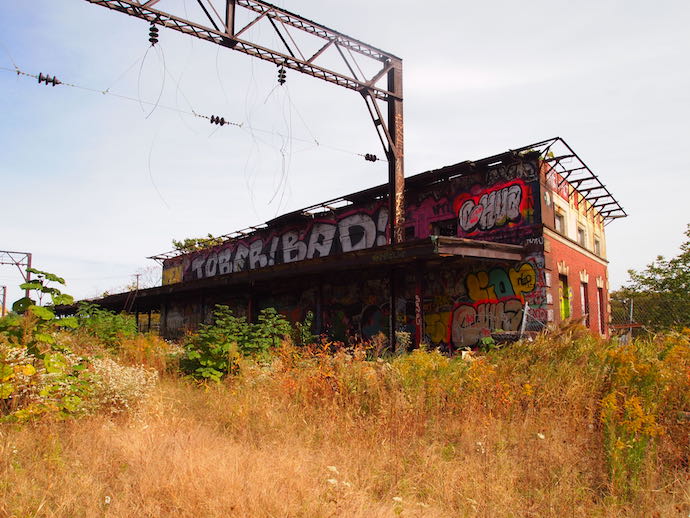
In October of 2013, I toured three miles of disused railroad line in Philadelphia. Some of it was underground, some on ground level, and some elevated. All of it was covered in spontaneous vegetation—garden plants, common weeds, and native species, a wild, diverse hodgepodge of over 50 species alive with fungi and butterflies and ladybugs. I even saw a groundhog. My guides that day included Dale Hendricks, a permaculture expert and owner/operator of Green Light Plants and landscape designer and train enthusiast Paul vanMeter, an advocate for turning the city’s hidden wilderness into a park. Sadly, Paul died unexpectedly in early 2014.
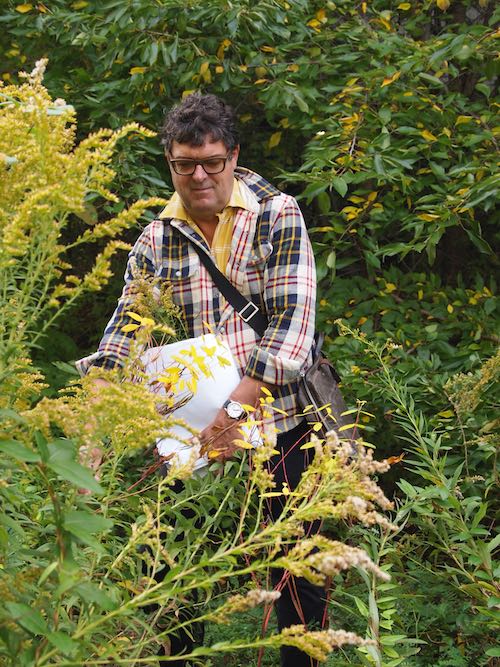
I was moved on our tour of the rail line by the beauty and tenacity of nature, even in the heart of the city. By the time we finished our tour, on a broad, rippling meadow of golden grasses and wildflowers that had grown on top of rusting tracks, two stories above the street, I was wiping my eyes a little. Somehow in this place, I felt an intimation of a kind of reconciliation between humans and the rest of nature, which we have treated so poorly for so long and become so sadly alienated from, just as a person who has been cruel can’t look the victim of their cruelty in the face. Here nature was showing us her resilience and her wild beauty, and offering to meet us where most of us live now, in the city. There in the low sun were yellow blooming primroses, elm trees growing sideways out of walls, paulownia trees with leaves so big some of them were tagged with graffiti, milkweed with fluff spilling from its pods, pokeweed in berry, aspen, cherry, tree of heaven, common mullein, oriental bittersweet, autumn olive, southern magnolia, and Queen Anne’s lace.
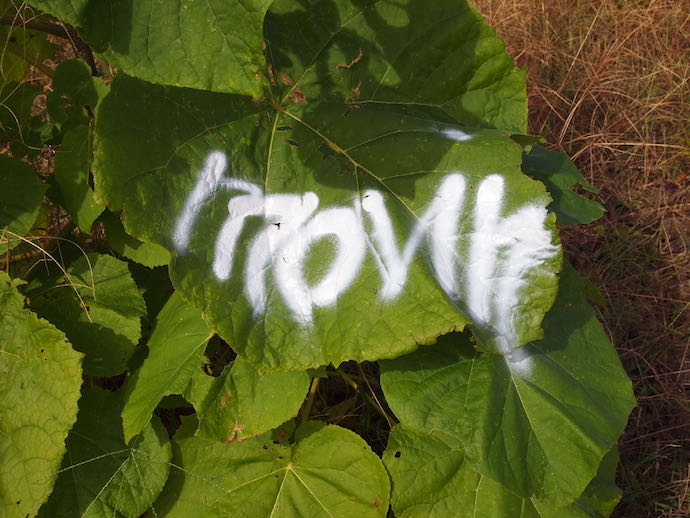
The tricky thing about this urban wilderness, though, was what I think of as the High Line Problem. New York’s High Line park also began as an abandoned rail line, and just as in Philadelphia, the plants that grew their on their own captured the imagination of the city. But when the park was developed, they couldn’t simply lean a ladder up to the tracks and tell people to have fun. For safety reasons, for city planning reasons, for accessibility for people using wheelchairs, and for aesthetic reasons, they ended up more or less scraping the place down to the bare surface and starting over. Landscape designer Piet Oudolf nodded to the texture of the wild weeds in his beautiful design, but perhaps ironically for a park that sprang from an appreciation of the feral and untended, it now has the highest maintenance costs of any park in the city.
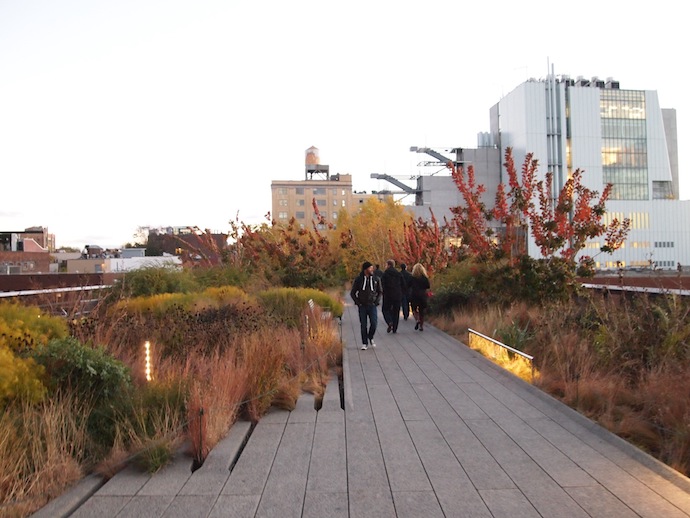
If “the Rail Park” is to come to be—and it is—it too will have to give up some of its wildness. Recently, the first section of the park was put out to bid to be turned into a park. I spoke with Bryan Hanes, the landscape designer who won the contract, about his vision for the design. Hanes said that in discussions with the neighbors, it is clear that people like the plants that are already there. But they will have to go. “The reality is, most of that can’t be saved,” he says. “To turn it into an active, useful park space most of the ground has to be torn up.” Much of the soil is contaminated, it is a long way from meeting city codes and ADA requirements, and several of the plants woven into the diverse mix are considered “invasive”.
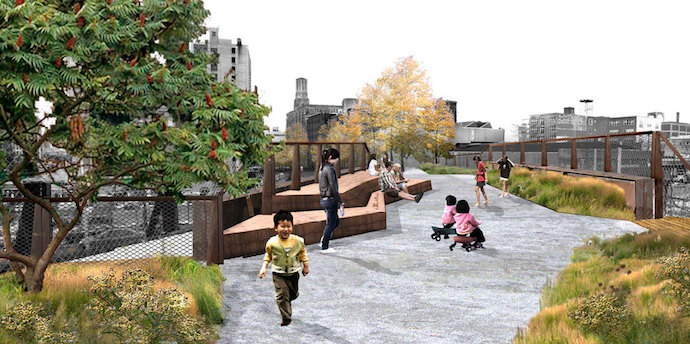
But like Oudolf, Hanes will take some cues from what he uproots. He promises a similar texture but “a predominately native palette. Some of the weed trees we saw growing up, we are going to replace them with something more horticulturally appropriate, more ecologically appropriate.” I completely understand the many constraints Hanes is working with, but I push back a bit, wondering why we have to be so purist about native species in the heart of a city, wondering why we can’t let nature decide instead of always being the boss. Surely we can enable access for people with wheelchairs without ripping everything up? Hanes suggests that a lighter touch might be possible with some of the future sections of the project. At the moment, he’s only designing one part of it, a sort of entryway that he envisions as being a bit more formal. Maybe someday everyone will be able to wander the meadow of wild nature level with second-story windows as I did that golden afternoon and feel that same glimmer of rapprochement between a sometimes-destructive species and the rich natures that created us through slow evolutionary time.
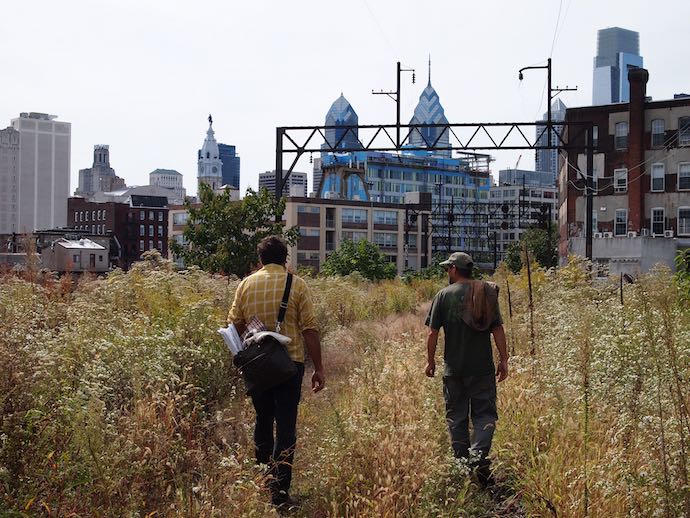
I don’t claim that this kind of autonomous city ecosystem is better than Yellowstone or Yosemite or any large protected area in which you can get well and truly lost. I don’t claim it is worse, either. It is different. The enthusiasm for the High Line and the Rail Park show that we can appreciate and connect with wild urban landscapes, despite our culture of hating “invasive” plants and our American disdain for any “nature” smaller than at least a small state. I just hope that someday we solve the High Line Problem and learn how to enjoy our urban wildernesses, officially, and in large numbers, without tidying their wildness away.

In an urban setting the wild spaces become filled with the wildest of the humans who live there, those who have no space of their own. For a park to serve the greatest good of the urban population as a whole, it must be tamed, made civil itself.
I think I disagree. One thing I worry about as we learn to value urban wild spaces is “green gentrification,” where spaces become considered so valuable that the original users are forced out. Sometimes this takes the form of new green space increasing home prices in the neighborhood. Sometimes, in these wild places, it means that groups like homeless people are forced out. And for me, that’s a negative outcome. Don’t the homeless deserve places to relax and enjoy nature?
What a lovely and thoughtful essay, thank you.
“The homeless” need sorting. Paupers simply should not exist in a modern economy. We do not need parks for violent people. Addicts should be in treatment and not loose in parks. If we’re talking about sane campers, we end up with a need for reservations and crowd control.
Nothing is simple.
Maybe the high maintenance costs are just the price we need to pay.
I always enjoy your articles , Sad to “reclaim” an area we have to destroy it….
Thank you Emma for this. All folks- of all income group- are entitled to wildness- and clean air and water now that you mention it- as you note above- this is not at all the same as safe, stylized “wildness”…..
Emma, I hope you know that Paul had a mad crush on you, to be able to talk enthusiastically about the intersection of industrial ruin and spontaneous vegetation with someone who loved wildness as he did. I was also on one of those Reading Viaduct tours, with Paul and Dale and also Rick Darke and Piet Oudolf and Annik LaFarge. The unruly nature of the unexpected invasive plants mixed with the usual ruderal players brought out a fierce and loyal passion in all of us that few tamed parks can claim. And how else can we get as vibrant and sculptural a background than to drop all this into the surrounding architecture of city buildings and rail line elements? It was truly magic, and to see it scrubbed clean makes me cringe. It takes a very careful edit of our landscape designer skills to even attempt to replicate that wildness. I think Piet Oudolf and James Comer have done a masterful job on the High Line. The maintenance issues there have more to do with our expectations as park goers to have an easily legible design. My hope is that as those expectations evolve, the maintenance regimes can be relaxed into ones more closely resembling the benign neglect of truly wild spaces.
City Parks and Rec Dept and PHS should save good plants that have to be moved and replant in parks. Many beneficial perennials take tears to mature.
Replace “tears” with “years.”
The High Line was essentially the city’s “Plan B”, with “Plan A” being to enact Guilani’s desire to demolish the rail for a series of developments that would have provided a net negative ecological impact. It is romantic to assume that any “wilderness” there would have been left intact in place of the park. There is also no shortage of nouveau wild spaces in our cities and suburbs, especially in our underserved communities. You create an erroneous connection between the High Line’s maintenance cost and it’s planting scheme when the vastly high costs of maintaining the park have more to do with the upkeep of it’s aged infrastructure than it does with horticulture. This undermines gardening as a profession by assuming these spaces should not be managed and staffed to the extent that they are. While I do agree with your thoughts regarding the Rail Park’s exclusive nativity and need for lighter touch in it’s development, I find framing your post as a “The High Line Problem” problematic in itself.
Adam, I think you make a fair distinction on the maintenance costs, though when I toured the park, I was told that maintaining the plantings was also relatively resource intensive. (It wasn’t hard to believe either; everything looked fabulous.) And for the record, I really like the plantings there. I think they are gorgeous and doing a lot of good work in terms of enlarging people’s aesthetic in New York and really around the world.
I do admit to being romantic about the spontaneous vegetation they replaced and at the site that will become the Rail Park.
A Eyring, I thought “tears” was pretty appropriate. Any perennials I manage to shepherd to maturity in my own garden get there with plenty of blood, sweat, and tears. In my post “On Competence” I describe weeping as I butcher my climbing roses.